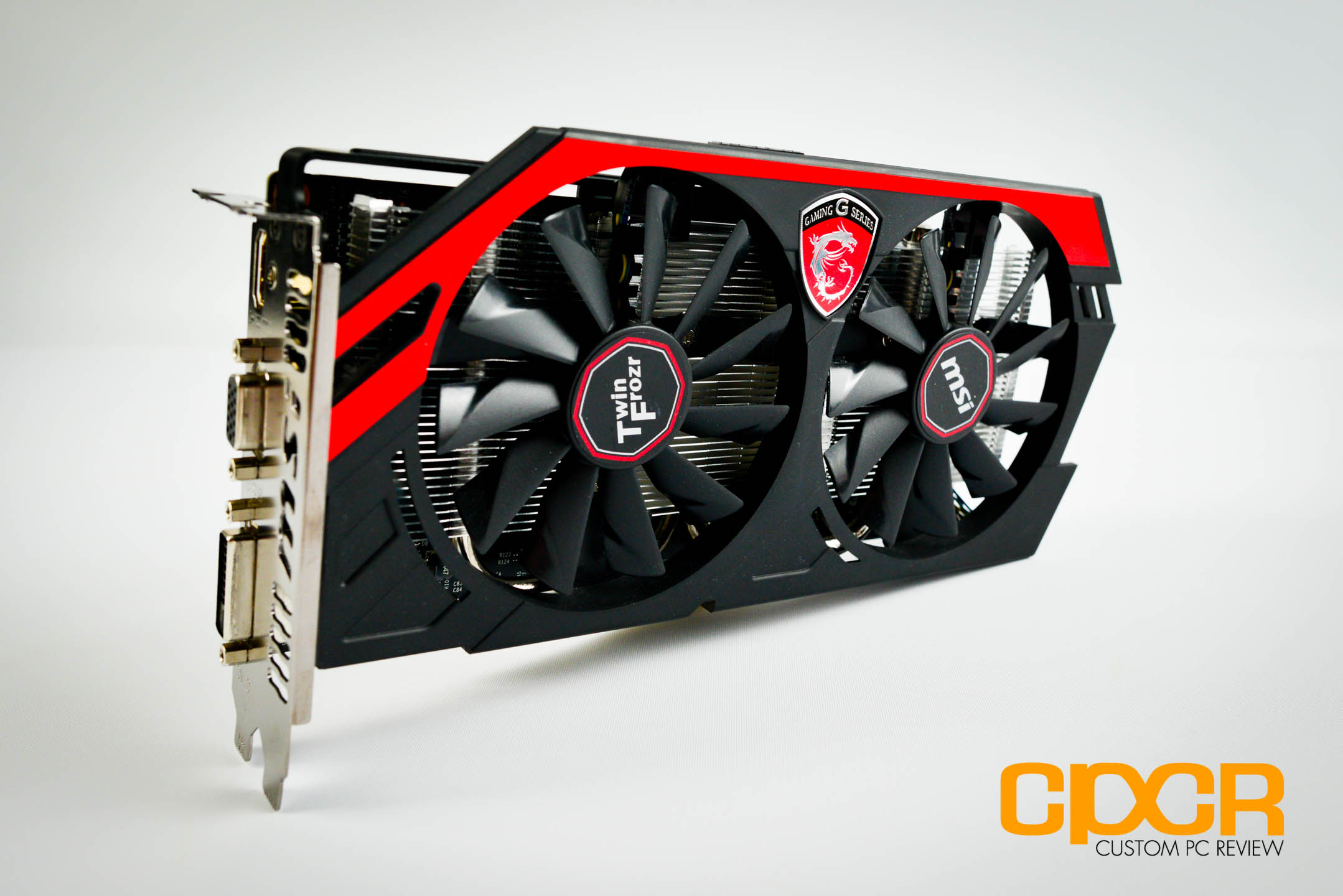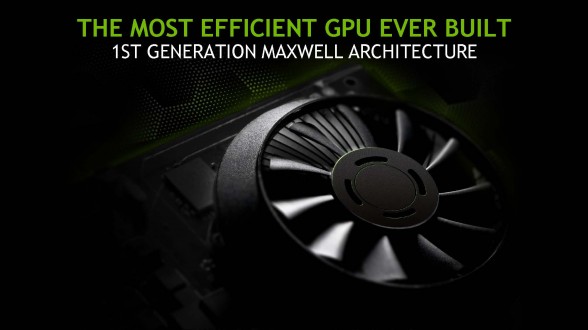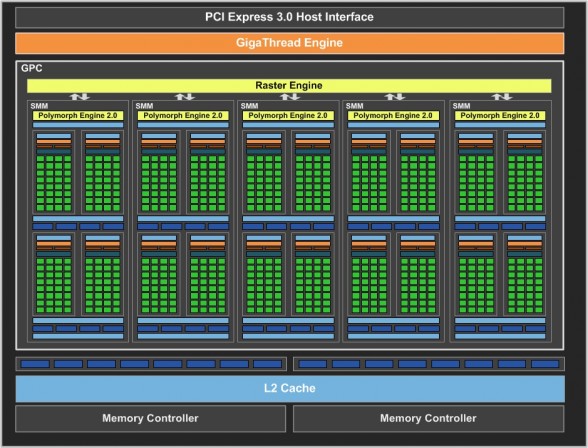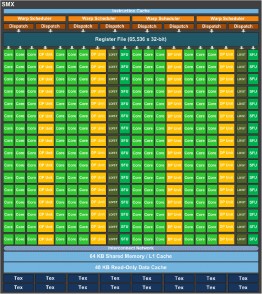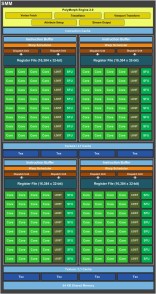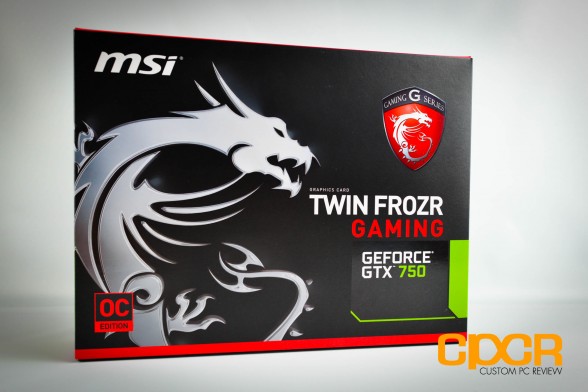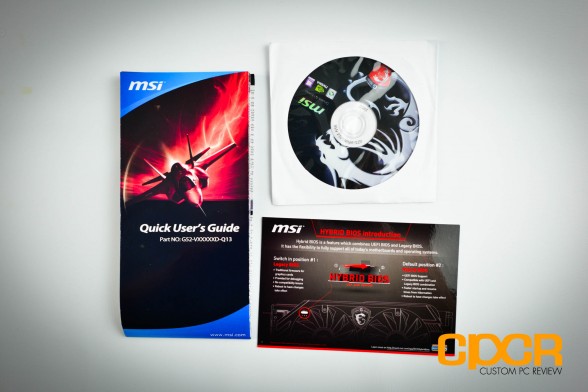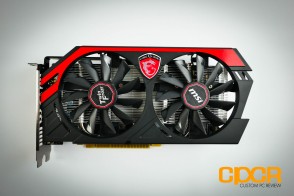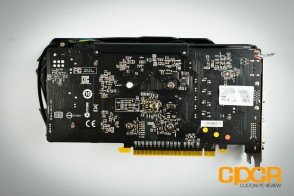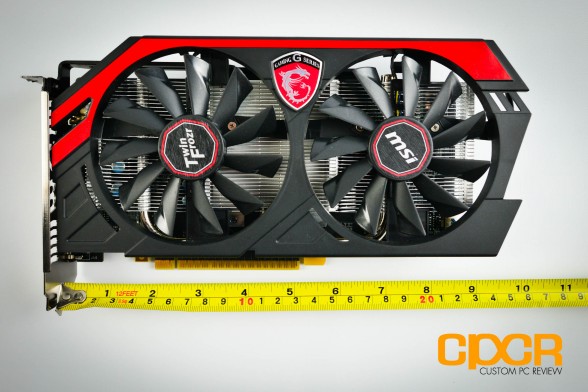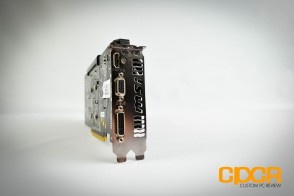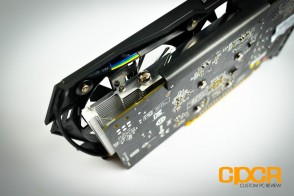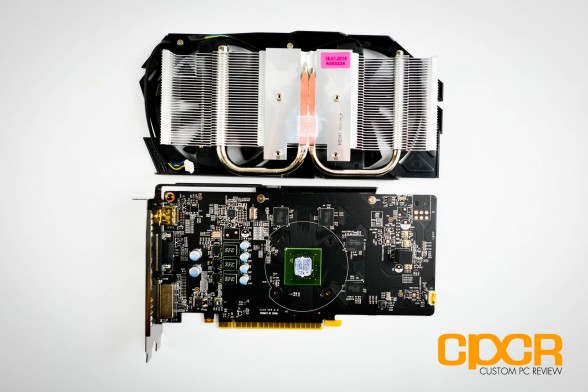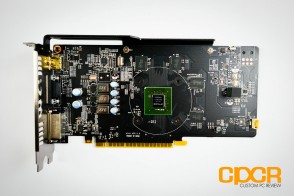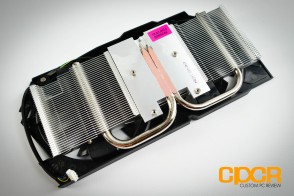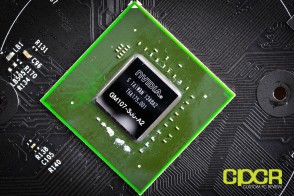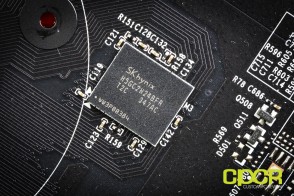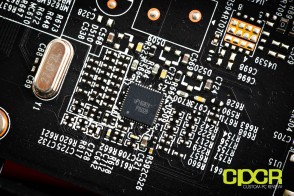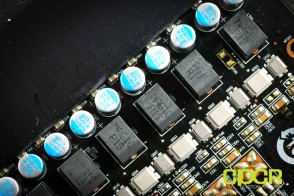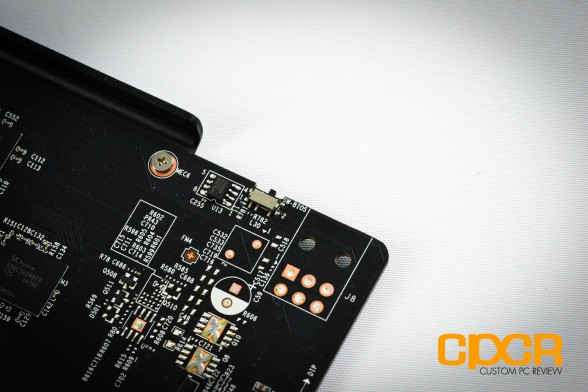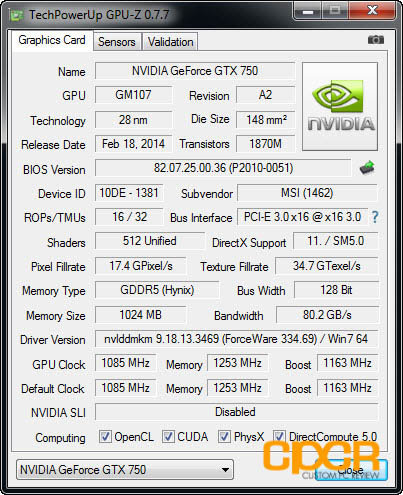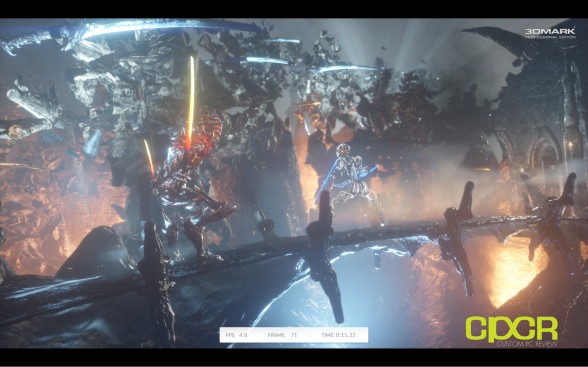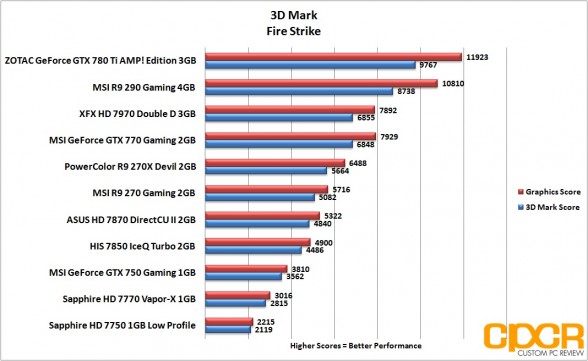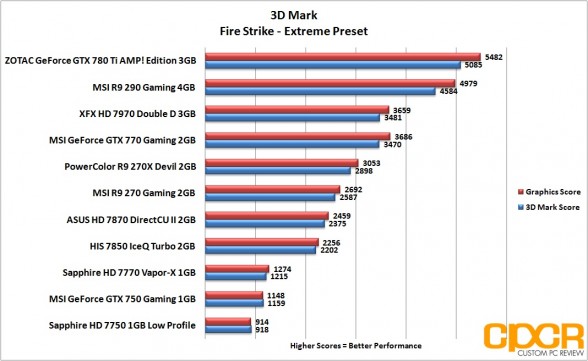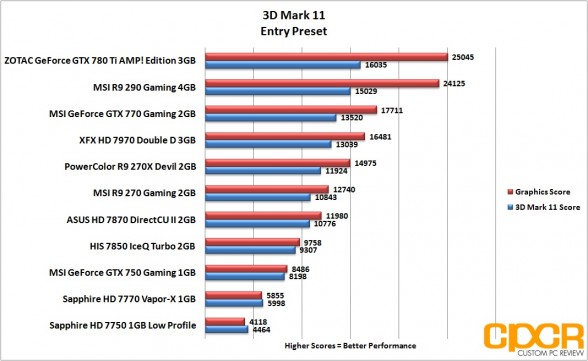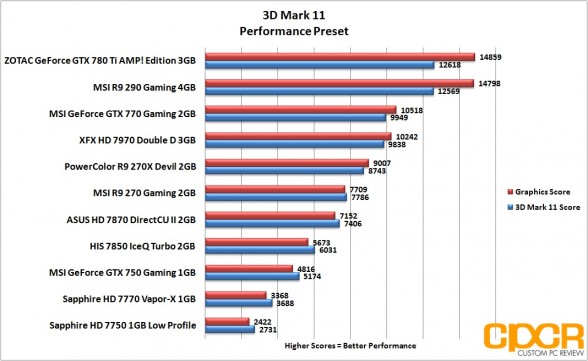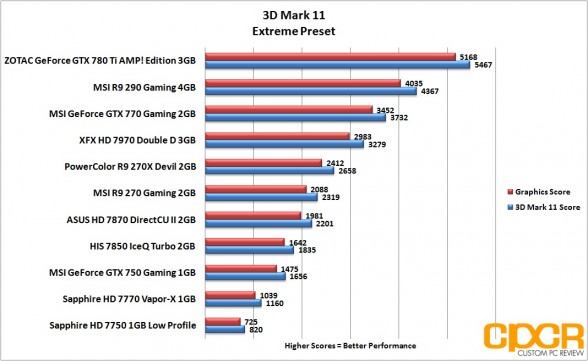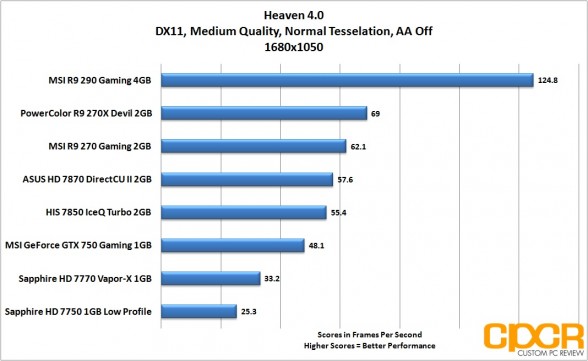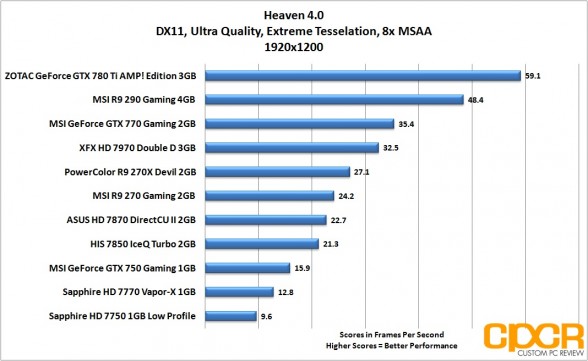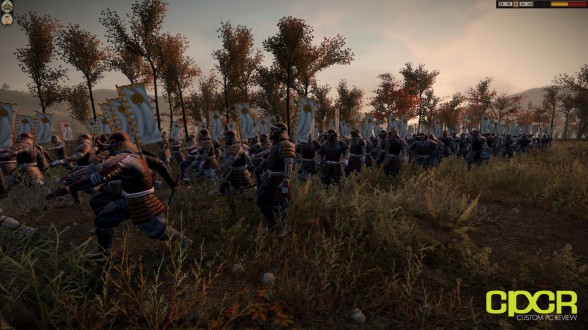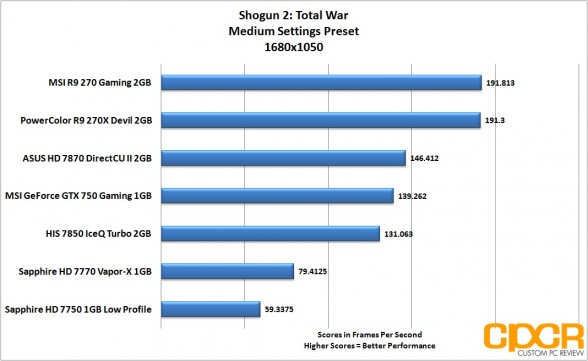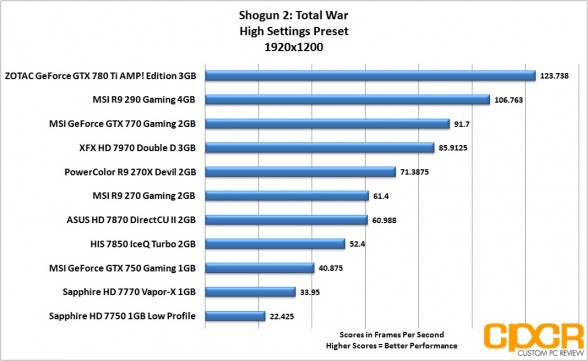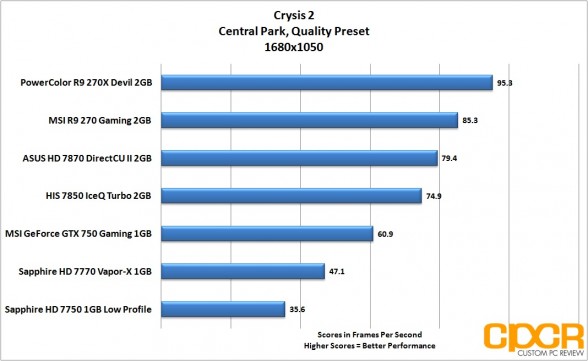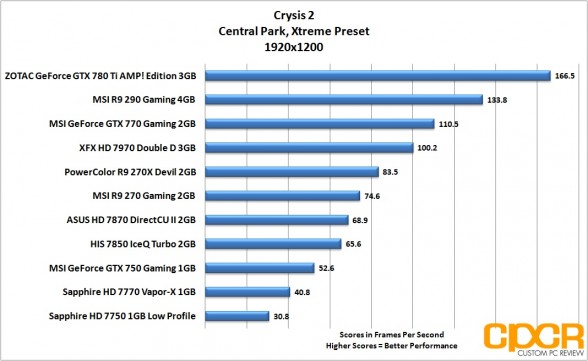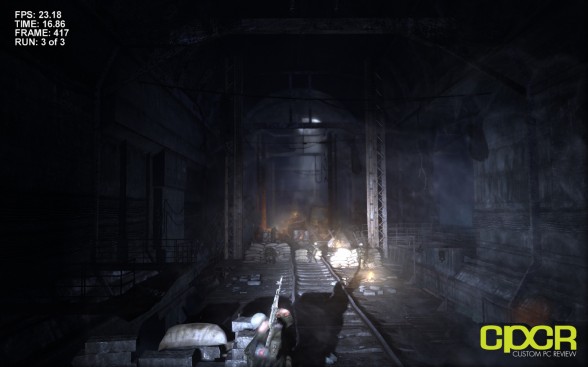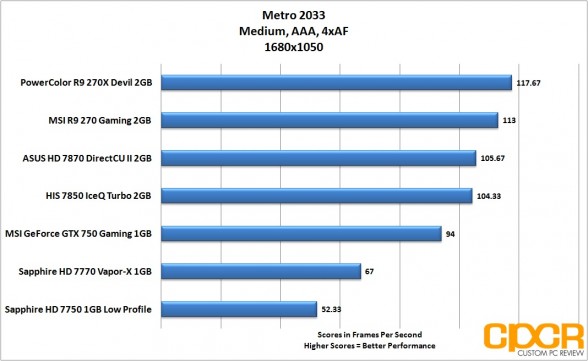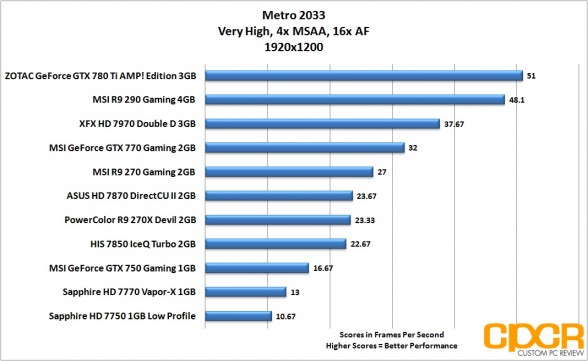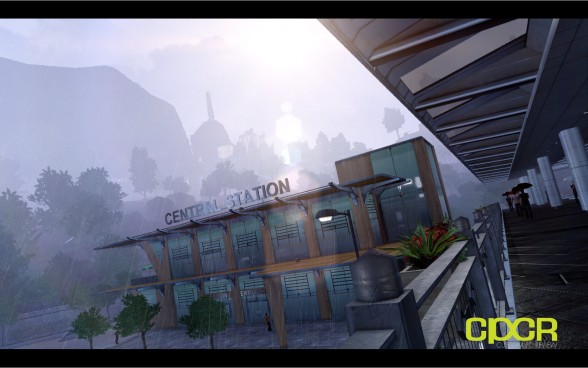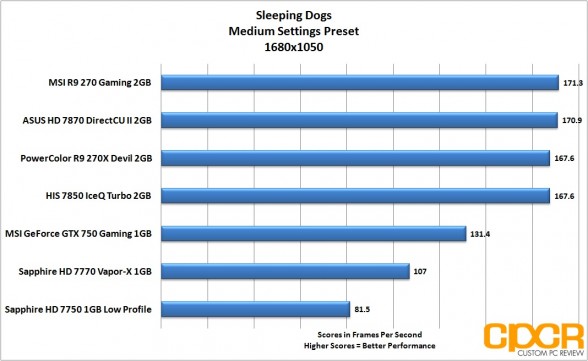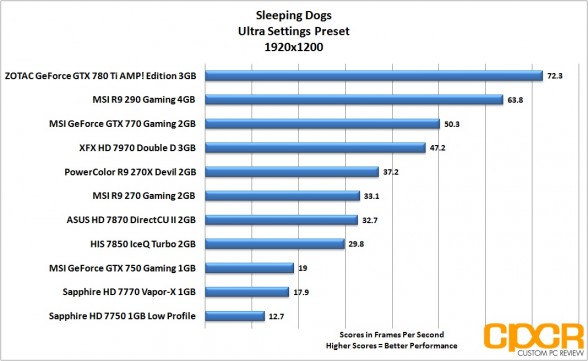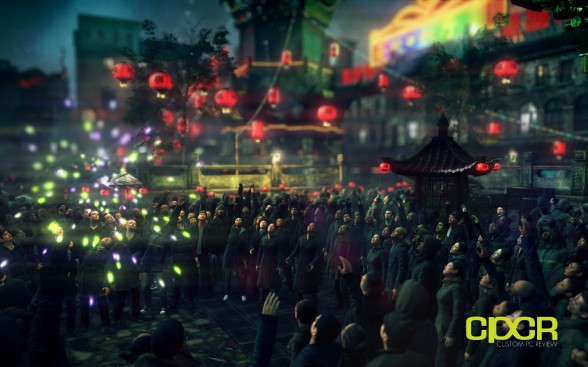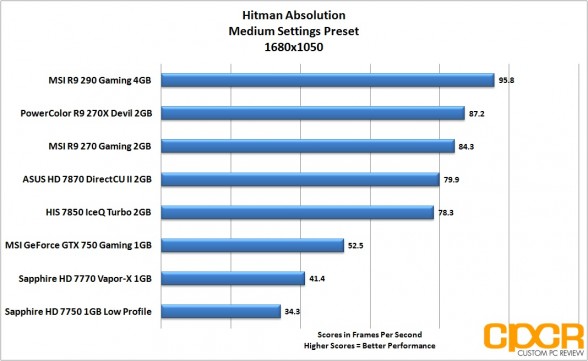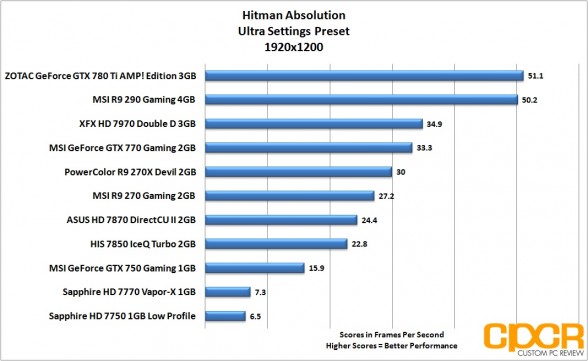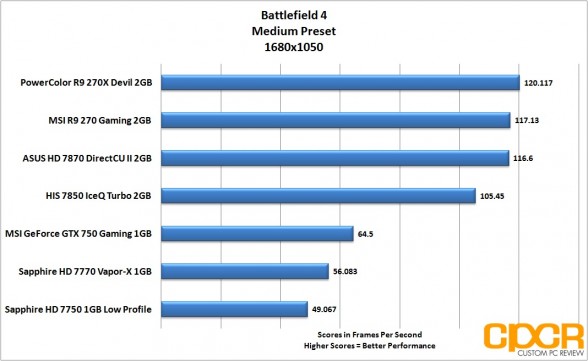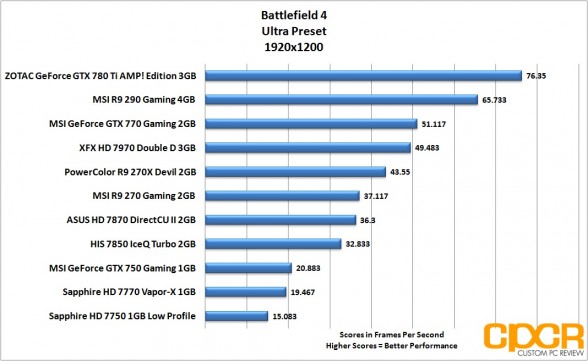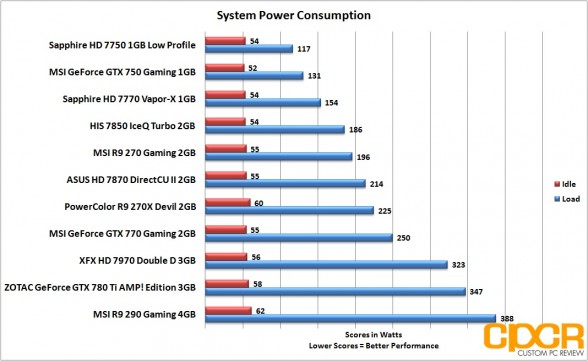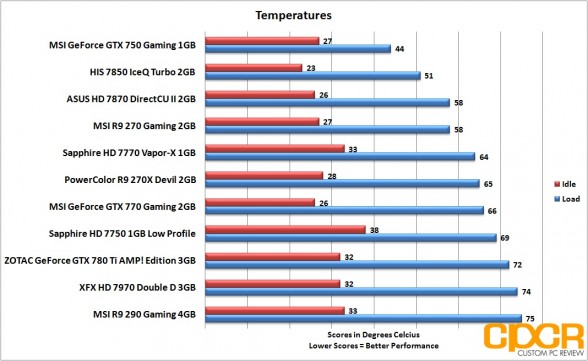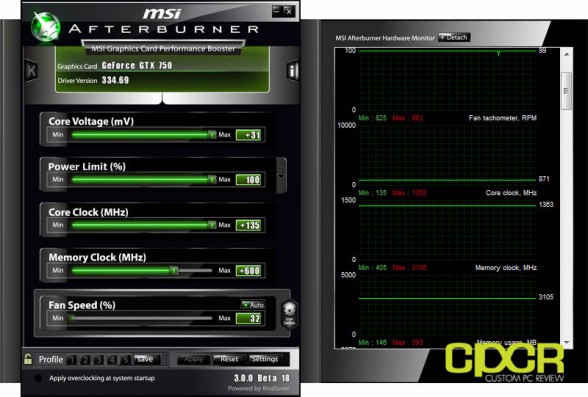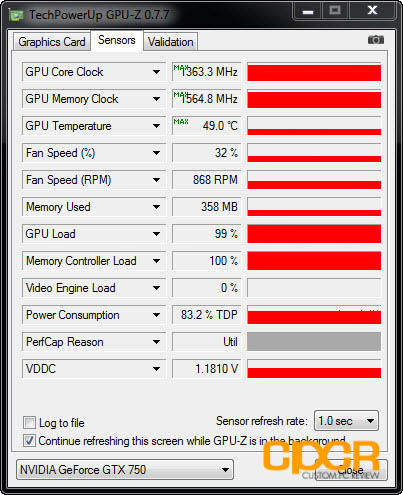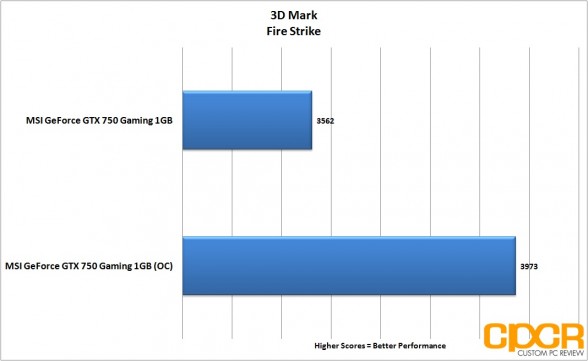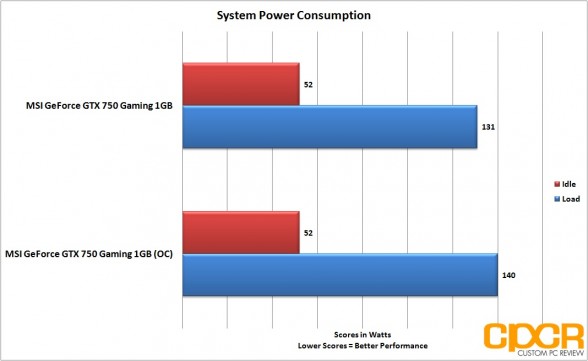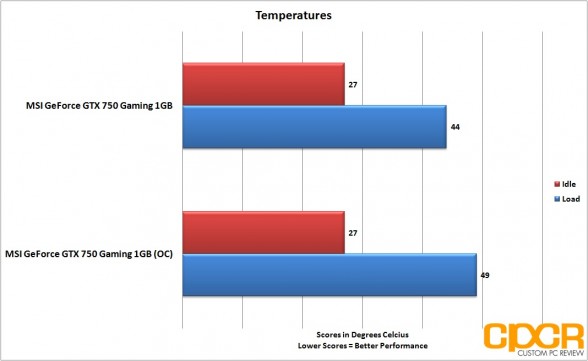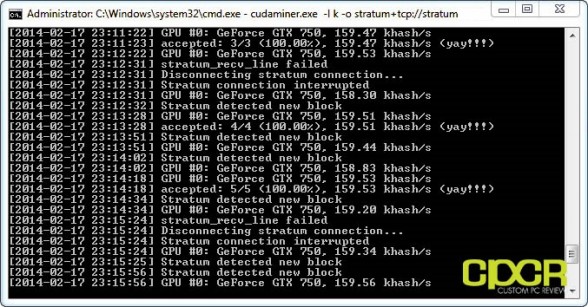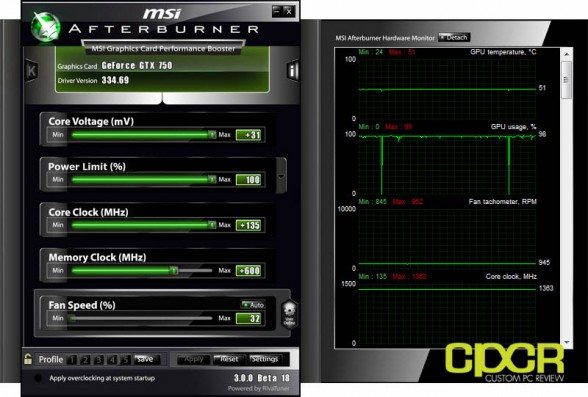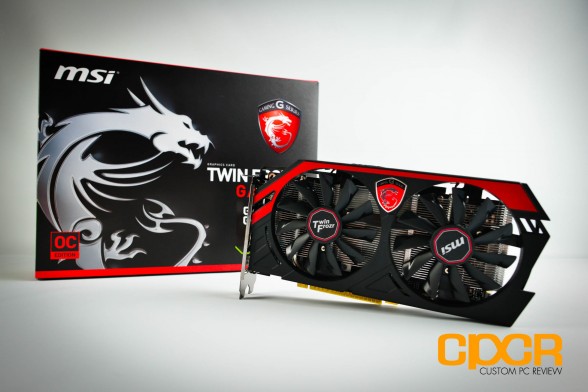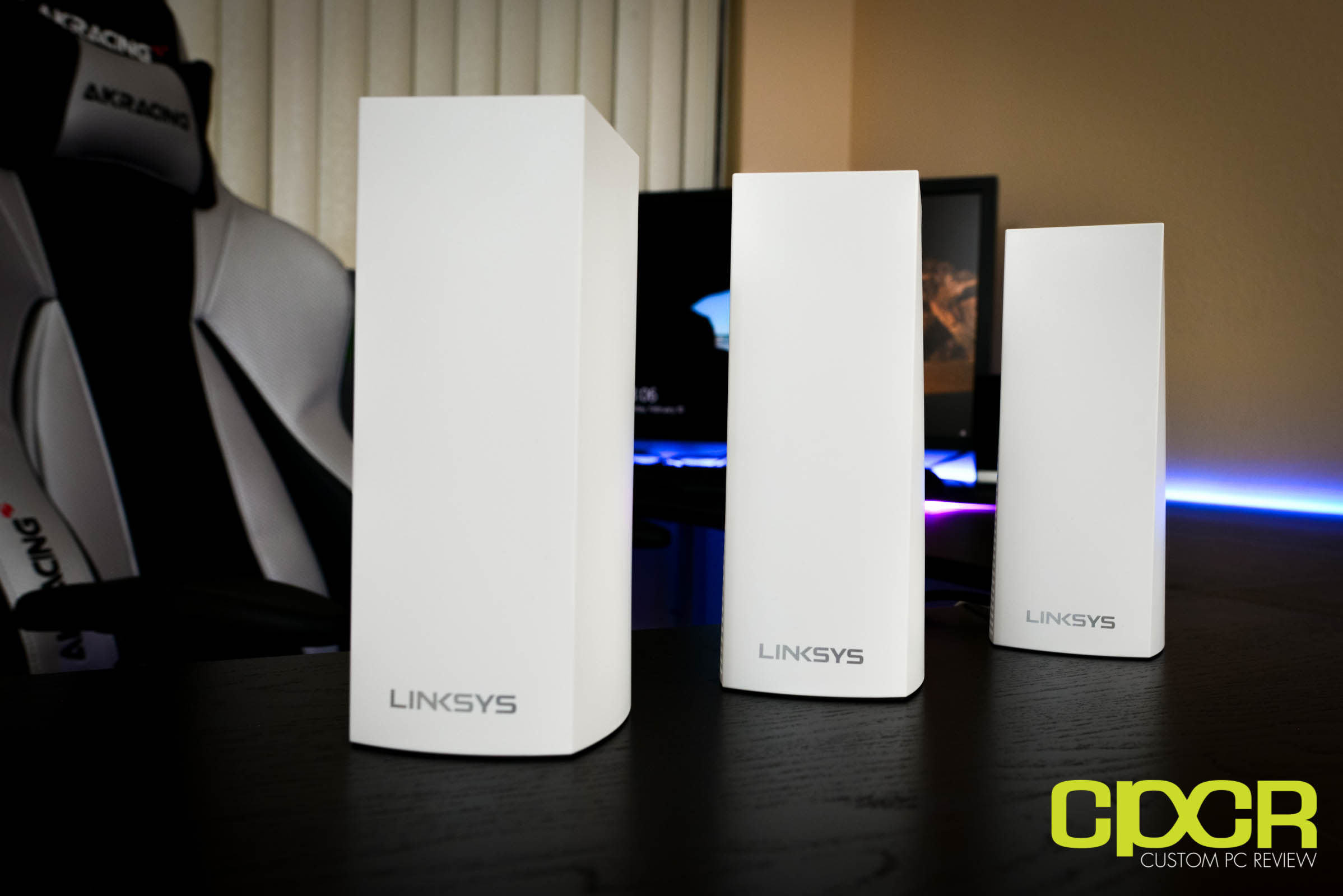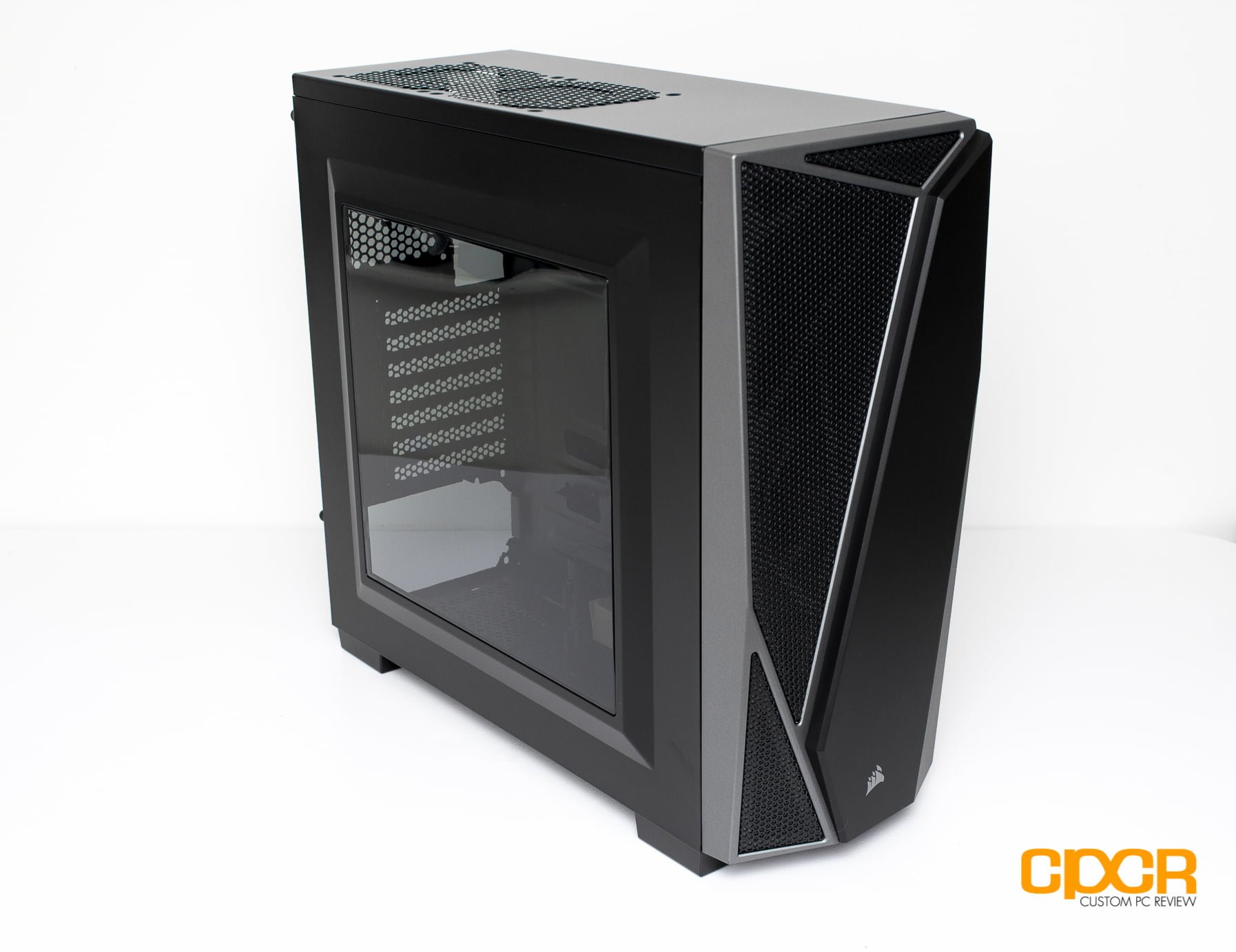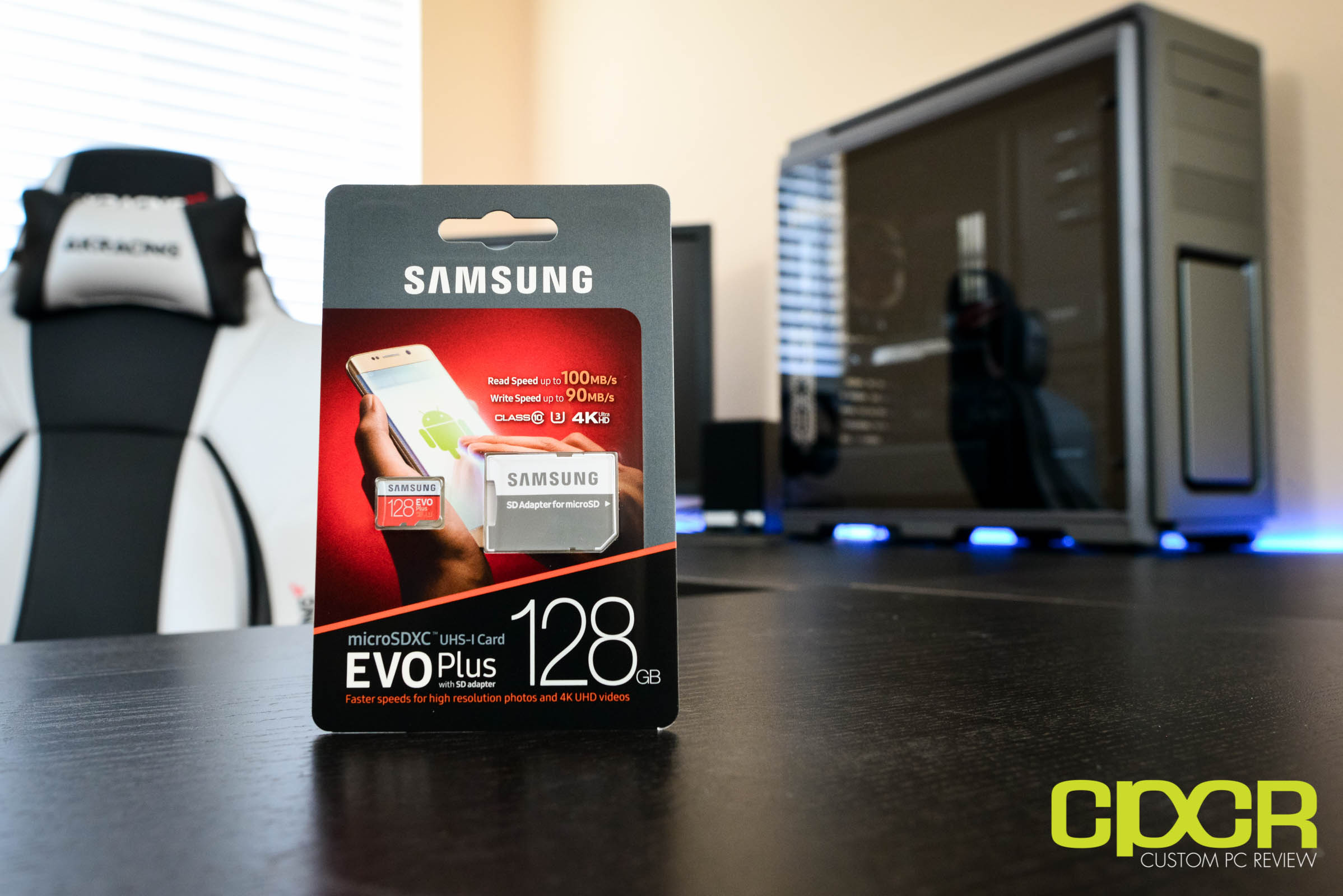[section label=1. Introduction]
Hello Maxwell
Four years ago Nvidia launched the 40nm based Fermi GPU, two years ago Nvidia launched the 28nm based Kepler GPU, and now, two years after Kepler’s launch, it’s now time for Nvidia to launch their latest and greatest GPU – Maxwell.
Back at GTC of last year, we first officially received confirmation of Nvidia’s Maxwell GPUs, with Maxwell’s main goal of continuing the trend Nvidia began setting with their Kepler GPUs – better performance yet not at the expense of increased power consumption. Prior to Kepler, Nvidia had traditionally not worried too much about power consumption as long as performance increased by leaps and bounds, but with Nvidia trying to become competitive in the mobile arena, Nvidia really wanted to hit both performance and power efficiency simultaneously.
Meet the GM107
| GPU | GK107 | GM107 |
|---|---|---|
| Codename | Kepler | Maxwell |
| Fabrication | 28nm | 28nm |
| Base Clock | 1058MHz | 1020 MHz |
| Boost Clock | N/A | 1085MHz |
| Architecture | SMX | SMM |
| CUDA Cores | 384 | 640 |
| Texture Units | 32 | 40 |
| ROPs | 16 | 16 |
| Memory Interface | 128-bit | 128-bit |
| Memory Frequency | 5.0 GHz | 5.4 GHz |
| L2 Cache Size | 256KB | 2048KB |
| TDP | 64W | 60W |
Nvidia’s first Maxwell GPU that will hit market in the form of the GM107, which is actually a mainstream GPU rather than something that’s designed for the high end enthusiast. Traditionally when releasing new architectures, Nvidia unveils a higher end flagship or enthusiast part then follows that up with the more mainstream products; however with Maxwell, it’s going to be mainstream first followed by flagship later this year.
It’s currently unknown exactly why Nvidia chose to release a first generation Maxwell part for the mainstream market followed by a second generation Maxwell part for the enthusiast market, but word on the street is that TSMC’s 20nm process, which is what Nvidia wants to manufacture on, is not yet ready. Instead of delaying the release of Maxwell, Nvidia will instead unveil and test their Maxwell architecture by releasing a 28nm based mainstream product (GM107) while waiting for TSMC’s 20nm process to become ready for an enthusiast 800 series launch down the line.
Here’s a look at the block diagram for the GM107 GPU. It’s fairly simple. We’ve got one GPC, five Maxwell SMM units, a 2048KB L2 cache and two 64-bit 128-bit memory controllers. This is the full implementation of the GM107, which will be shipping in the GeForce GTX 750 Ti. The vanilla GeForce GTX 750 on the other hand will have one of the Maxwell SMM units disabled.
Nvidia’s New SMM Architecture
With Maxwell, Nvidia’s main focus wasn’t to introduce groundbreaking changes in the architecture but rather energy efficiency, and a lot of the changes they’ve made are changes that improve the already efficient Kepler core. Among the improvements include a significantly larger L2 cache (256KB in GK107 to 2048KB in GM107) allowing for fewer calls to memory, an all new Maxwell SMM architecture, and various other smaller changes in the core to tune it for better energy efficiency.
The biggest change is the improvements to the SM (Streaming Multiprocessor) architecture. Whereas the older Kepler SMX core had a single piece of control logic handling 192 CUDA cores, Maxwell’s SMM architecture instead divides each SMM unit into four, separate blocks of 32 CUDA cores each with its own control logic (instruction buffer and scheduler). Pairs of processing blocks now share four texture filtering units and a texture cache, the L1 cache has been rolled into the texture cache, and shared memory is now a separate unit which is shared between all four blocks. Nvidia says these improvements in the Maxwell SMM architecture alone delivers up to 35% more performance per CUDA core and Maxwell GPUs will deliver 2x the performance per watt compared to what we saw in Kepler.
Additionally, Nvidia will also be improving upon the NVENC hardware based H.264 video encoder which will allow faster encode of up to 6-8x real-time for H.264 versus 4x real-time for Kepler. This will allow for better streaming and game recording capabilities down the line and better performance for developers who want to take advantage of the NVENC encoder. (Valve, TwitchTV, maybe?)
MSI GeForce GTX 750 Gaming Specifications
| GPU | GeForce GTX 650 | GeForce GTX 750 | MSI GeForce GTX 750 Gaming | GeForce GTX 750 Ti |
|---|---|---|---|---|
| Codename | Kepler | Maxwell | Maxwell | Maxwell |
| Fabrication | 28nm | 28nm | 28nm | 28nm |
| Base Clock | 1058MHz | 1020 MHz | 1085 MHz | 1020 MHz |
| Boost Clock | N/A | 1085 MHz | 1163MHz | 1085MHz |
| Architecture | SMX | SMM | SMM | SMM |
| CUDA Cores | 384 | 512 | 512 | 640 |
| Texture Units | 32 | 32 | 32 | 40 |
| ROPs | 16 | 16 | 16 | 16 |
| Memory Configuration | 1GB GDDR5 | 1GB GDDR5 | 1GB GDDR5 | 2GB GDDR5 |
| Memory Interface | 128-bit | 128-bit | 128-bit | 128-bit |
| Memory Frequency | 5.0 GHz | 5.0 GHz | 5.0 GHz | 5.4 GHz |
Today we’ll be reviewing MSI’s custom implementation of the GeForce GTX 750, specifically the MSI GeForce GTX 750 Gaming. While it’s mostly based on Nvidia’s GeForce GTX 750, MSI has given the graphics card the gaming series touch which includes the Twin Frozr IV cooler, Military Class components, and of course a slight factory overclock as well from 1085MHz boost clocks to 1163MHz boost clocks.
Let’s take a closer look.
[section label=2. A Closer Look (Exterior)]
A Closer Look at the MSI GeForce GTX 750 Gaming
Here’s a look at the packaging for the MSI GeForce GTX 750 Gaming.
Here’s a look at the accessories. It’s pretty light here with only some documentation along with a driver disk.
Looking at the MSI GeForce GTX 750 Gaming for the first time, we really didn’t expect to see such a large cooler/PCB considering the GeForce GTX 750 GPU is only rated at 55w TDP and even the GTX 750 Ti GPU is only rated at 60w TDP. MSI really overbuilt the cooler here using one of their dual heatpipe/92mm fan combo Twin Frozr IV coolers, which seems to have the same design as those used on their 150w TDP class GPUs.
Spinning around the back of the PCB, there’s nothing too interesting here, but MSI has given the GeForce GTX 750 Gaming a black PCB, which is a nice touch. There’s also a bracket up top to prevent the GPU from sagging although I’m not sure if that’d be much of a problem with this card.
With the huge cooler, the MSI GeForce GTX 750 Gaming spans about 9.8″ long, which is pretty big for a card that doesn’t even use external power.
Video outputs on the MSI GeForce GTX 750 Gaming include DVI, VGA, and HDMI. There’s no DisplayPort here so you’ll only be driving a single >1920×200 resolution monitor with this card. The beauty of the Maxwell architecture is that Nvidia has really focused on improving power efficiency to the point that the GTX 750 Gaming doesn’t even require an external power connection. This puts maximum theoretical power consumption at only 75w (PCIe slot).
[section label=3. A Closer Look (Interior)]
A Closer Look at the MSI GeForce GTX 750 Gaming
With the removal of only four screws, we can remove the Twin Frozr IV cooler for a closer look. As expected, the PCB is pretty sparse, most likely to make room for additional components that would be included with the MSI GeForce GTX 750 Ti Gaming although I can’t imagine that card really taking advantage of all this space either.
The Twin Frozr IV cooler is a pretty standard design for MSI. There’s two heatpipes (one 6mm and one 8mm “superpipe”) which direct heat away from the GPU while dual 92mm fans cool down the massive aluminum fin grid array. Strangely, MSI did not include any sort of thermal interface material over the memory or practically any other component on the PCB other than the GPU itself. Each GDDR5 module is fairly spread out and the GPU doesn’t get all that warm though so it probably doesn’t need the type of cooling we’d normally expect on higher end GPUs.
Here’s a closer look at the Nvidia GM107-300-A2 GPU core powering the MSI GeForce GTX 750 Gaming. The MSI GeForce GTX 750 Gaming also has 1024MB of Hynix H5GC4H24MFR-T2C GDDR5 memory running at 5GHz on a 128-bit memory interface.
Here’s a look at some of the VRM components onboard the MSI GeForce GTX 750 Gaming. We get a UPI Semiconductor uP1608 4/3 phase buck controller along with MSI’s “Military Class” 10-year solid caps, Hi-C CAPs, and solid state chokes.
Next to the empty slot where a 6-pin power connector could be implemented, MSI also has a BIOS switcher which switches between a traditional BIOS and what MSI calls a “Hybrid BIOS”, which is essentially a UEFI + traditional BIOS. Pretty much, the switch is only used for troubleshooting purposes, but it may be useful for those interested in flashing the BIOS with the safety net of having a backup BIOS in case you manage to screw up the first one.
[section label=4. Testing Setup]
MSI GeForce GTX 750 Gaming Performance
Testing Setup
Ivy Bridge Test Bench
| CPU | Intel Core i5 3570K |
|---|---|
| Motherboard | Gigabyte Z77X-UD3H |
| Memory | Kingston HyperX Genesis 16GB DDR3 2133MHz |
| Graphics | N/A |
| Boot Drive | OCZ Vertex 4 128GB SSD |
| Storage Drive | Western Digital Caviar Green 3TB |
| Power Supply | Corsair HX650 |
| Case | HSPC High Speed Tech Station |
| Optical Drive | ASUS OEM DVD Drive |
| Operating System | Windows 7 Ultimate x64 SP1 |
Special thanks to Gigabyte, Kingston, OCZ Technology and HSPC for sponsoring our test bench!
Initial Boot
[section label=5. 3D Mark]
MSI GeForce GTX 750 Gaming Performance
3D Mark
The new 3D Mark, now referred to as just 3D Mark, is Futuremark’s latest update to the popular 3D Mark series of benchmarks. The updated 3D Mark now includes multiple benchmarks for cross platform support as well as updated graphics to push the latest graphics cards to their limits.
[section label=6. 3D Mark 11]
MSI GeForce GTX 750 Gaming Performance
3D Mark 11
3D Mark 11 is an extremely popular benchmark designed by Futuremark for the sole purpose of stress testing a system’s graphics performance. Trusted by hardware enthusiasts and gamers world wide, 3D Mark 11 uses the latest features of DX11 to stress test graphics performance with consistent loads which simulate in game performance.
[section label=7. Unigine Heaven]
MSI GeForce GTX 750 Gaming Performance
Unigine Heaven v4.0
Unigine Heaven is another DX11 benchmark that stresses the graphical processing capabilities of the GPU using the advanced UNIGINE engine.
[section label=8. Shogun 2: Total War]
MSI GeForce GTX 750 Gaming Performance
Shogun 2: Total War
Shogun 2: Total War is the most recent installment of the long running Total War series. Capable of using DX11’s features, it’s the perfect benchmark to test for the gaming performance. For our testing today, we’ll be using the Shogun 2: Total War benchmark utility.
[section label=9. Crysis 2]
MSI GeForce GTX 750 Gaming Performance
Crysis 2
As the successor to Crysis, which was hailed as the most graphically intensive game of all time when it was released in late 2007, Crysis 2 is less graphically demanding than its predecessor, but still one of the most graphically challenging games of all time. You simply can’t take a step in Crysis 2 without stepping into some intense tessellation. Combined with rich lighting, insane physics, and oodles of post processing, Crysis 2 requires a ton of graphics muscle to run.
Today, we’ll be benchmarking Crysis 2 in the map “Central Park” with the Adrenaline Crysis 2 Benchmark Tool.
[section label=10. Metro 2033]
MSI GeForce GTX 750 Gaming Performance
Metro 2033
Similar to Crysis 2, Metro 2033 is extremely tessellation intensive and fills the ranks as one of the most graphically intense games of all time.
Today, we’ll be benchmarking Metro 2033’s Frontline map using the Metro 2033’s included Benchmark Utility.
[section label=11. Sleeping Dogs]
MSI GeForce GTX 750 Gaming Performance
Sleeping Dogs
Released in 2012, Sleeping Dogs is an open world action-adventure title based on the infamous Hong Kong triads. With an open world environment, fast paced action and excellent graphics, Sleeping Dogs makes for a perfect test of graphics card capability. For our benchmarking today, we’ll be using Adrenaline’s Action Benchmark Tool.
[section label=12. Hitman: Absolution]
MSI GeForce GTX 750 Gaming Performance
Hitman: Absolution
Hitman: Absolution is a action adventure game released in late 2012 which focuses on the hitman, Agent 47, and his assassination missions. After a 6 year hiatus, the Hitman series is back in full force with updated graphics based off the developer, Square Enix/IO Interactive’s Glacier 2 engine. For our benchmarking today, we’ll be using Adrenaline’s Action Benchmark Tool.
[section label=13. Battlefield 4]
MSI GeForce GTX 750 Gaming Performance
Battlefield 4
Only a year after the initial release of Battlefield 3, the team at DICE went back to the drawing board to introduce their latest and greatest modern combat shooter, Battlefield 4. Based off DICE’s all-new Frostbite 3 engine, Battlefield 4 brings a new level of realism to the world of PC and console gaming with an unparalleled level of visual immersion, realistic character animations, and physics driven dynamic environments.
For our benchmarking, we’ll be doing a benchmark on a 60 second run of the game at the beginning of the Tashgar mission. While this scene doesn’t involve any firefights, it’s a very graphics intensive scene that involves a fast moving drive through the hills of Tashgar, which makes heavy use of the Frostbite 3’s motion blurring, depth of field, particle effects, and real time lighting engine.
[section label=14. Power Consumption and Temperatures]
MSI GeForce GTX 750 Gaming Performance
Power Consumption
For power consumption testing, we’ll be measuring full system power while idle along with full system power with the graphics card running at full load using Furmark. All power consumption measurements will be measured with the Extech 380801 Power Analyzer.
Temperature Testing
For temperature testing, we’ll be measuring both graphics card temperatures when the graphics card is idle for 5 minutes after a cold boot. Load temperatures are taken after a full 30 minute burn using Furmark.
While some of you aren’t huge fans of Furmark as it creates an ultra heavy, unrealistic load on the graphics card, we feel like it’s a more useful tool as it differentiates between graphics cards that have extremely well designed coolers and ones that simply have cooling solutions that simply pass the test, if you will. Most games these days generally don’t create enough of a load/heat to even exceed temperatures where the fans would spin up on most custom coolers so it’s difficult to adequately rank cooling solutions without using a tool like Furmark.
[section label=15. Overclocking]
MSI GeForce GTX 750 Gaming Overclocking
For overclocking, we used MSI’s latest Afterburner BETA, version 3.0.0 Beta 18. Unfortunately it still wasn’t properly reading the memory clocks on the GPU, but GPU-Z seemed to work fine and the GPU was responding to the sliders fine, so we used the sliders to overclock the card to 1363MHz core / 1564MHz memory (~6.2GHz effective). We also thought we had access to unlocked voltages as the slider in Afterburner was unlocked, but to our dismay it wasn’t working properly and the voltage was locked at 1.1810v. Either way, we were able to achieve ~17% increase in core clocks and a massive ~25% increase in memory clocks even without an unlocked voltage, which is great. It’s always nice to see when there’s a ton of overclocking headroom in a GPU.
3D Mark Performance – Fire Strike
With our huge overclock, we were able to net a decent ~11.5% increase in performance in 3D Mark Fire Strike.
Power Consumption
When overclocked, we only saw an increase of 9w in load power consumption which isn’t much because voltages on the MSI GeForce GTX 750 Gaming is locked. That and we’re pretty much limited by the 75w PCIe slot.
Temperatures
Overclocked or not, the Twin Frozr IV cooler on the GTX 750 Gaming is a whole lot more cooler than is needed for a power sipping GPU like the GTX 750. Temperatures under extremely heavy load never exceeded 50°C even while running Furmark with an overclocked GPU.
[section label=16. Scrypt Mining]
MSI GeForce GTX 750 Gaming Scrypt Mining (Bitcoin, Litecoin, Dogecoin, etc)
Like it or not, GPU mining for cryptocurrencies is all the rage these days so we’ll also be doing a bit of scrypt mining testing as well. For our testing today, we’ll be using cudaMiner which is a great scrypt mining application designed for Nvidia GPUs.
One of the things that was improved with the Maxwell architecture is improved core efficiency and computation performance by divvying up the SM units between four control logic units instead of one. This should provide us with much better performance when doing computational intensive tasks such as scrypt mining for cryptocurrencies.
Unfortunately, we weren’t able to fully take advantage of the GeForce GTX 750’s Maxwell cores as cudaMiner hasn’t been optimized for Nvidia Maxwell GPUs quite yet. We found that simply having cudaMiner autodetect settings would actually cause cudaMiner to crash on start, so instead we threw in the “-l k” flag, which suggested to cudaMiner that we had a Kepler GPU in the system, which is obviously untrue.
Despite this, the MSI GeForce GTX 750 Gaming, with a bit of overclocking, was able to do about 159 khash/s, which is quite good for a bus powered only GPU.
To help us consistently hit 159 khash/s, we also overclocked the GPU to the same 1363MHz core / 1553MHz memory (6.2GHz effective) as we did in our overclocking testing earlier. Temperatures on the GPU were not of concern. The MSI GeForce GTX 750 Gaming’s cooling system is well beyond what’s needed for the GPU. Even at full load with cudaMiner, the GPU only hit 51ºC.
[section label=17. Conclusion]
MSI GeForce GTX 750 Gaming Conclusions
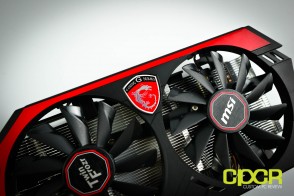 While these first generation Maxwell parts aren’t going to be all that interesting for most of you enthusiasts out there looking for top performance, I think it’s still exciting for us to know that second generation parts are coming shortly with even better efficiency than ever before. Given the improvements in the SM architecture and the move to finer manufacturer processes, it’s quite reasonable to think that we may have a Maxwell based GTX 780 Ti equivalent rated at 150w TDP by the end of the year. That would be really interesting.
While these first generation Maxwell parts aren’t going to be all that interesting for most of you enthusiasts out there looking for top performance, I think it’s still exciting for us to know that second generation parts are coming shortly with even better efficiency than ever before. Given the improvements in the SM architecture and the move to finer manufacturer processes, it’s quite reasonable to think that we may have a Maxwell based GTX 780 Ti equivalent rated at 150w TDP by the end of the year. That would be really interesting.
As for performance the GeForce GTX 750 is still somewhere in the low/mid-range area, but it’s still very impressive given that it’s a 55w TDP, PCIe bus powered GPU. In our testing of MSI’s GeForce GTX 750 Gaming, it was easily able to push playable framerates at 1680×1050 resolutions and even did quite well in a number of games at the 1920×1200 resolution. Since our testing at 1920×1200 has very GPU intensive tessellation, AA (anti-aliasing), AF (anisotropic filtering), HBAO (Horizon Based Ambient Occlusion), etc. on, by turning some of these settings off the GTX 750 Gaming would easily play a number of games at 1080p.
Overclockers will also be happy to find that the MSI GeForce GTX 750 Gaming has a ton of headroom for additional overclocking. While ultimately overclocking is limited by the fact that the GPU can only draw up to 75w via the PCIe slot and voltages are locked, it’s still possible to get a fairly substantial overclock without much additional heat or power draw. The nice thing about the Twin Frozr IV cooler is that it’s significantly more than what’s needed for the GTX 750, which allows the GPU to run extremely cool and silent even under heavy load while overclocked.
Speaking of the Twin Frozr IV cooler, I’m thrilled MSI really went all out and then some on cooling for the GTX 750 Gaming, but I can’t help but think a graphics card like this would be more suitable using a different PCB and different cooler combination. MSI already produces an awesome GeForce GTX 760 Mini-ITX Gaming graphics card that’s less than 7″ long and it’s 170w TDP. Why does the 55w TDP GTX 750 GPU need to be almost 10″ long? Given that the GTX 750 (and the GTX 750 Ti for that matter) is mostly going into mainstream systems with tiny cheap power supplies and tiny cheap computer cases, shouldn’t a smaller graphics card be the priority here?
The MSI GeForce GTX 750 Gaming is expected to be priced at $134.99 MSRP and should be available soon if not already. Nvidia’s reference design GTX 750 is expected to be priced at $119 MSRP, so MSI’s highly overbuilt gaming edition is only ~$16 premium over the reference design. Of course, prices do change when things start to launch but I think if you’re the type of person looking for an overbuilt card like this, you probably want the fastest bus-powered GPU around instead and I don’t see why you wouldn’t spend the extra couple bucks for the MSI GeForce GTX 750 Ti Gaming which is expected to retail at $169.99.
Overall the MSI GeForce GTX 750 Gaming is probably going to be the best custom GeForce GTX 750 implementation out on the market. It’s simply crazy that they’ve paired such high quality cooling and components for what’s basically an entry/mainstream level 55w TDP GPU. If pricing is right, I don’t think there’s any reason not to pick one up however, just be wary that the GTX 750 Gaming is unnecessarily huge so if you’re planning to upgrade your current system, make sure that you’ve got 9.8″ available.
Sample provided by: MSI
Available at: Amazon

